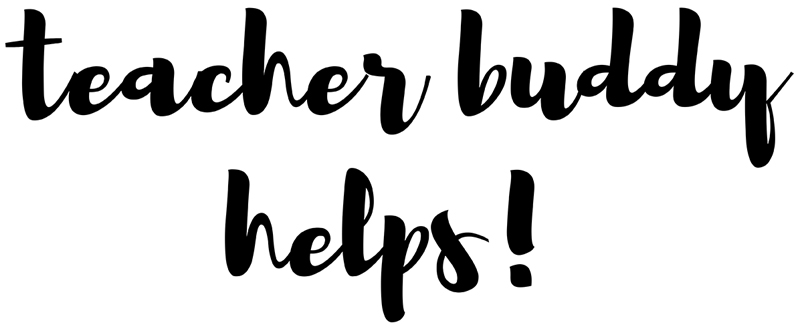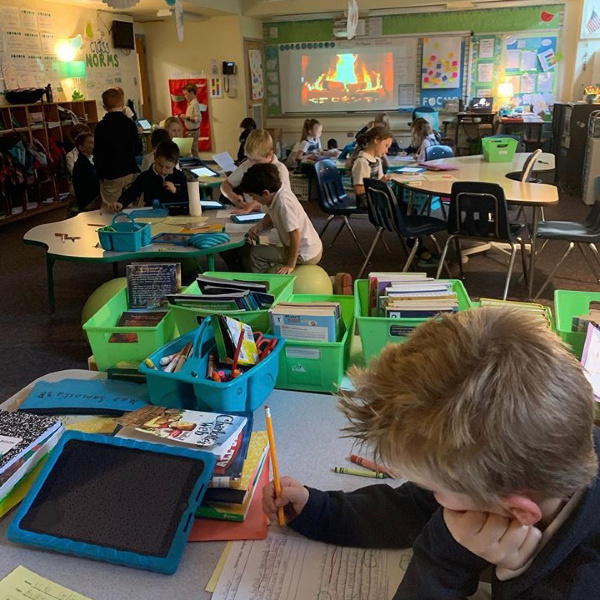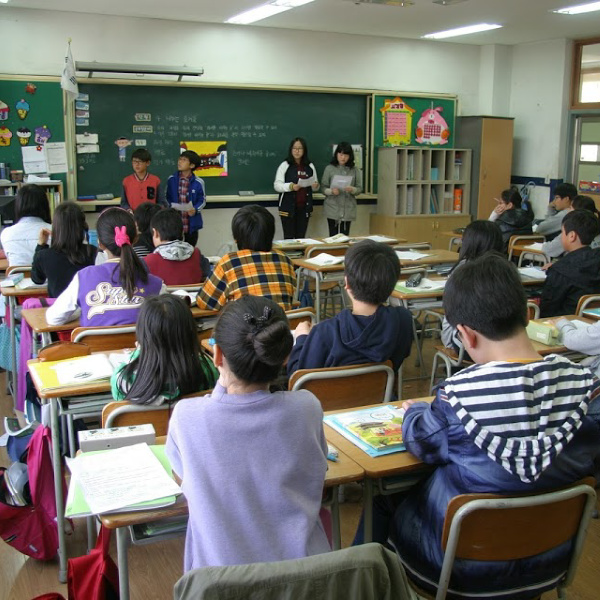Tackling Difficult Student Behavior Issues
Why are student behavior issues often the biggest struggle for teachers? Because humans are all individuals and unpredictable. What works one year in your class may not work the next.
As a quick reminder, I was both a classroom teacher and an administrator. I taught K-6th over a span of 17 years and I was an Assistant Principal and then a Principal for 14 years. SO, I SPEAK FROM EXPERIENCE!
I wrote an earlier article about dealing with discipline. You can read it here:
Minimizing and/or Eliminating Behavior Issues in Elementary Schools

Disclaimer: “Teacher Buddy Helps” provides general educational information on various topics on this website as a public service, which should not be construed as professional or instructional advice. These are my personal opinions only. Please read the entire Disclaimer section for more information.
Types of student behavior issues
There are different types of student behavior issues that teachers need to learn to navigate throughout their careers. I will describe a few that I have encountered and some strategies that I have found useful when working with students who are exhibiting these behaviors.
*** Please keep in mind that this list and article are not about Special Education Students. However, sometimes Special Education students do exhibit some of these behaviors. The remedies and strategies that I will be discussing may or may not apply to your Special Education student. And I must strongly recommend that you refer to the IEP and seek assistance from the IEP team for these students.
Here is a quick list of the behaviors I will discuss in this article.
- Power Struggles/ Outright Defiance
- Violent Behaviors and Dangerous S
ituations - The Student to Student Conflicts
- Theft and Vandalism
- Threatening Behaviors
If you are in need of a comprehensive list of classroom routines, I have one that you can download for FREE. Just complete the form here and I will zip it right over to your email.
**
And now for the Details on Student Behavior Issues
Below I will speak about each of these five situations. I’ll provide tips and things that worked for me over the years. Remember that many of my recommendations come from my experience as a Principal, so I know the legal rights of both teachers and students.
Power Struggles and Outright Defiance
#1. Power Struggles and outright defiance – It may not be obvious right away that you are entering into a power struggle situation with a student. As the adult in the classroom, you must remain calm BUT repeat your directives to the student. If the student is not complying with your request (directive) or is not backing down from their behaviors, you now have a power struggle on your hands.
DO NOT ESCALATE TO THEIR LEVEL – REMAIN CALM!
Do not ignore the defiance or back down from your directive!!! You need to remember that the entire class is watching what you are doing and how the situation is unfolding. Do not give in to this student.
After repeating your directive three times with no student compliance, level up your response by telling the student that you will send for an administrator if they do not comply.
My “educated guess” is that this warning will get compliance about 95% of the time (especially if the student has no reason to doubt your word).
But for the other 5%, call for help from an administrator or school resource officer. When they arrive, explain what is happening and ask that the student be removed from the class for the period.
Doing this will send a message to ALL YOUR STUDENTS. And the word will spread throughout the grade-level of what happened and how you handled it. Your credibility will increase tremendously when you remain calm and handle defiance in this manner.
Violent Behaviors and Dangerous situations
#2. Violent behaviors and dangerous situations –
NEVER IGNORE DANGEROUS BEHAVIOR AND VIOLENCE!
The very first thing you need to do when a dangerous situation occurs is to remove the other students from the area so that they are safe. Send for help right away. Send one student to the teacher next door and send another student to the office.
Next, make sure that you are not in danger. If there is a chance you could be hurt or killed, wait for assistance OR LEAVE THE AREA ALSO.
One year I had a first-grade student start to throw chairs and knock over desks. I did what I mentioned above and all the children were safe. I have never forgotten that situation. My heart was pounding and I wasn’t sure what to do, but thankfully, my instincts kicked in. I sent for help and sent the students next door to the other classroom so they were out of harm’s way.
There may be some instances where you can calmly talk them out of their dangerous behaviors. I’ve heard stories to teachers who were able to get a student to put a gun down, etc. I am not recommending this, BUT I must admit that teachers know their students well (after about the first month).
The Student to Student Conflicts
#3.
If you can get them to stop fighting or arguing, my recommendation is to isolate each of them into a corner (opposite side of the room from each other) and write a statement about what the fight was about. This allows them to calm down. For young children, they can draw a picture of what happened and “try” to write about it.
While they are writing, go back to teaching the class. If possible, do not interrupt instructional time to deal with this. Make the two “fighters” wait for a time when you can “deal with it.” Of course, if it is extreme (actual bodily harm), you will send them both to the office for the administration to deal with it. (send them one at a time with an escort).
I have found over the years if you ask students to tell you what happened, they just try to interrupt each other and shout down (over) the student who is speaking – with their “version” of what happened.
This does not lead to students calming down but often escalates the situation further. If you make them sit down to write it out, it allows them time to calm down while they are writing their version of the incident.
Document the Incident
Next, you will need to speak to each student individually and read their statement. KEEP THEIR STATEMENTS. After you have spoken to each individually, compare their stories to try to get to the truth. Ask each student (still separately) clarifying questions.
One strategy that I learned when I was an Assistant Principal is to ask the student “What did you do?” They will then try to tell you what the other student did to them. But you interject and restate, “What did you do?” Keep repeating this question if necessary. Eventually, they come around and describe what they did or said.
This serves a dual purpose; it gets a confession and it makes them realize that they had a part in this argument.
After you have a much clearer idea of the story, call both students up together and have them read their statement to the other student. Tell then firmly (before they start sharing their written statements) that they are not to interrupt each other (and if they do you will add to their punishments).
In cases of arguments, I try to get a place where the students apologize to each other. If they will not apologize, give them an appropriate punishment and move on with the day. Be sure to write a brief entry of the incident including the date and time in case either parent comes asking what happened.
Theft and Vandalism
#4. Theft and Vandalism – Dealing with theft and vandalism can be difficult if you did not witness the incident (and most of the time you don’t). You have to investigate or rely on the “word” of other students.
The important thing is that you know for a FACT that the student you are disciplining actually committed the theft or vandalism. If you are not positive but have a strong suspicion, refer the incident to the administration to deal with. I would say (in my opinion) that if you have three students who witnessed it and are willing to say so, then you can ask the office to deal with it.
As an administrator, the first thing I always tried to do was get the student to admit that they did it. If I could get the admission, then it was much easier to resolve.
Investigating these incidents take a lot of time for administrators. But that is part of their job. I believe that we need to make students accountable when they do wrong things so that (hopefully) they will learn from them and grow into an honest citizen.

Threatening Behaviors
#5. Threatening Behaviors – Periodically, (thankfully not too often) students will threaten their teachers. I am sure that this occurs much more often in Middle School and High School than it does in Elementary School.
When you have this incident occur, you must escalate it to administration right away. Now if it is a Kinder student and you’re not sure they know what they are talking about or whether they are serious or not, you can use your judgement. But even if you do not send them to the office, be sure to document it and tell the principal about it in an email.
Call for someone from the office to come to get the student. When the student has left ask the other students (if they witnessed the incident) to write a quick paragraph about what they saw.
Some will write that they didn’t see or hear anything. Accept these statements also (some kids live in a rough neighborhood and this is what they’ve been taught to do – see nothing, hear nothing). All you need is about 3 to 4 students describing it. Save these in case you need them. Let the principal know that you have them.
Another interesting article about student behavior can be found on another blog “Teach 4 the Heart. You can read it here: Stop Defiance in Your Classroom in 4 Simple Steps.
Conclusion
I hope that this article has given you some ideas for dealing with serious incidents when they occur.
Let me know how these strategies work for you. Or, if you have any questions I will be glad to address them with what I know.
Until Next Time,
Your Teacher Buddy






